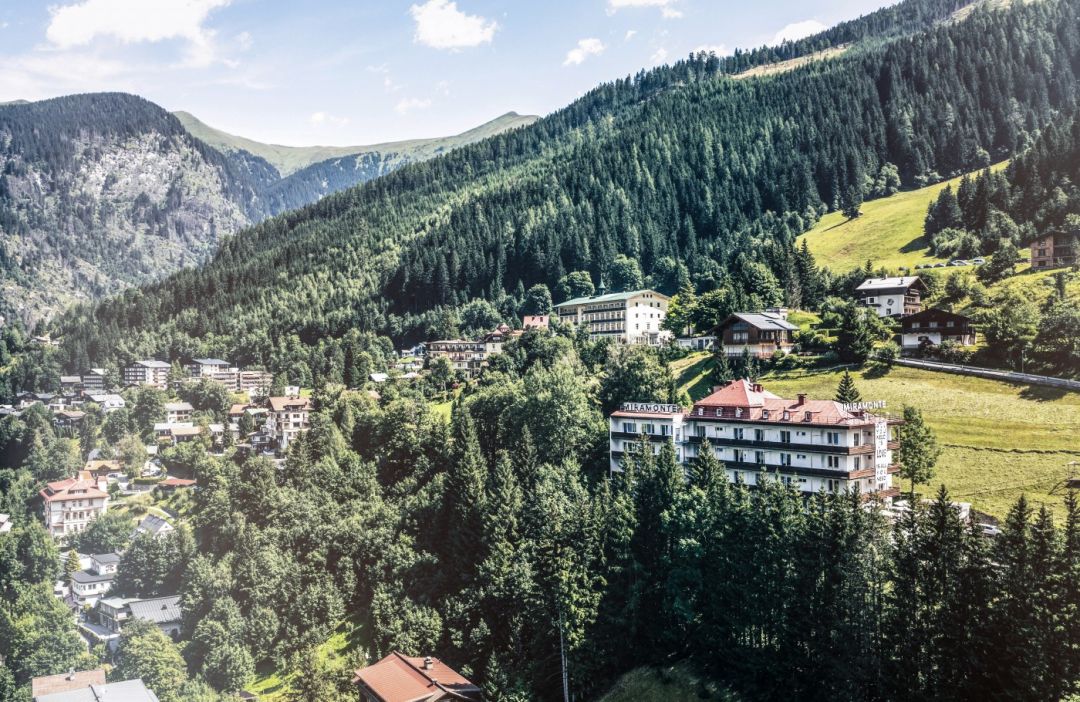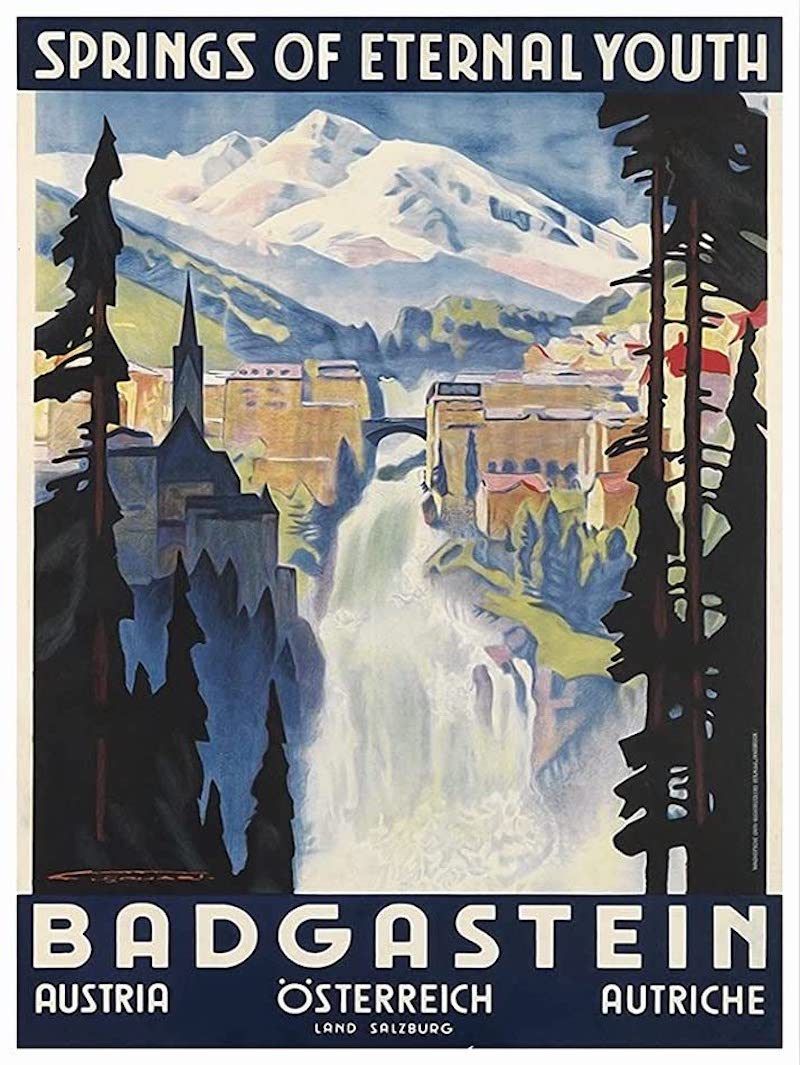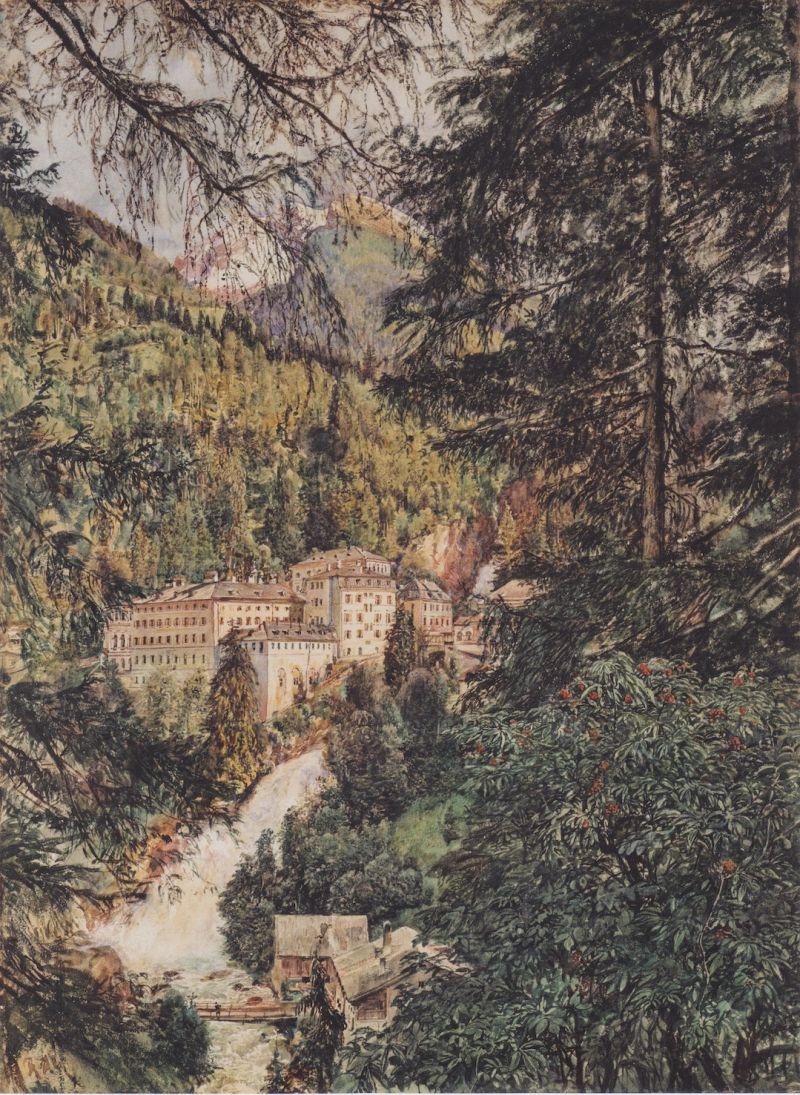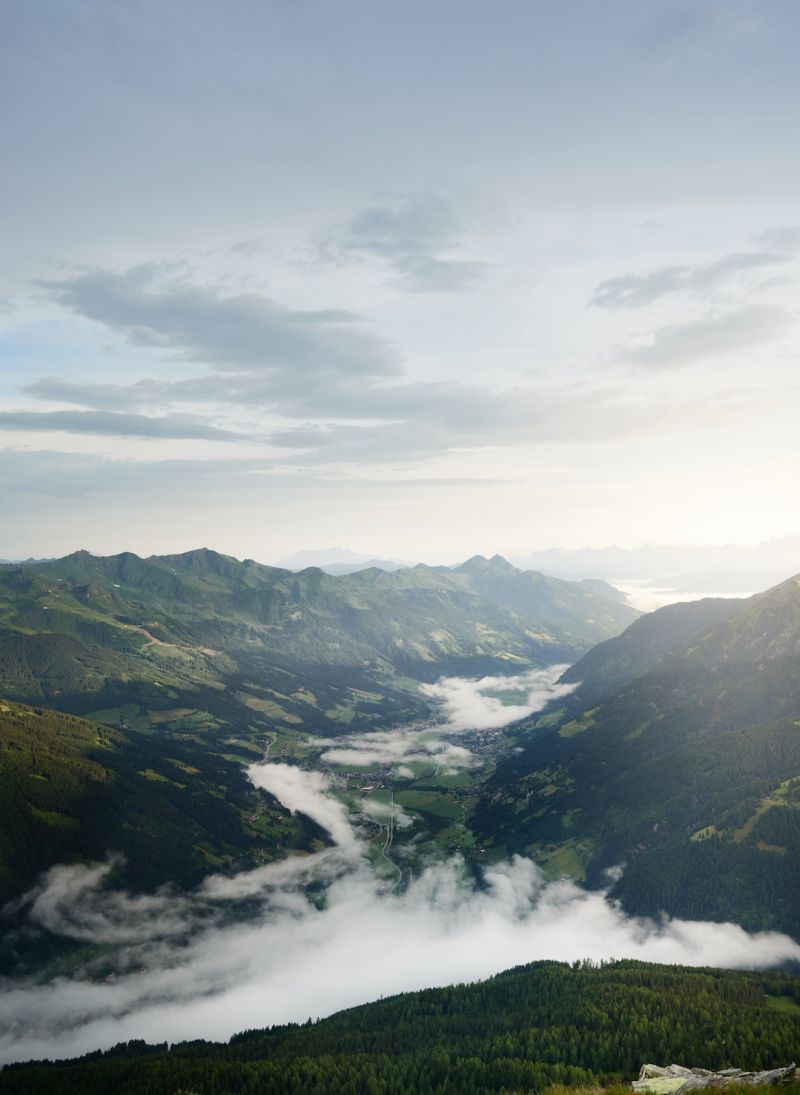JOIN the AFICIONADOS
Get the insider news and lowdown on what we've been up to, where we've been, and who we've met along the way. Be the first to discover new places and get the scoop on our favourites.
Affectionately known as the Monte Carlo of the Alps and the playground of the royals and the Habsburgs, Austria's Bad Gastein is a Wunderkammer of faded romantic glamour and energetic creativity - wrapped by a natural canvas of mountains. It's hard to describe in full without having visited this resort legend. The recent popularity of the 'Berlin" crowd has re-established Bad Gastein as the melting pot of culture; heritage meets cool. Located in the heart of the Hohe Tauern National Park, the town's iconic cluster of belle-epoque buildings, church spires, narrow streets curling around historical landmarks, and a 'Wes Anderson' colour palette add to the irresistible charm. So far, so fairy-tale.
Add to the mix a waterfall that literally crashes through the town’s centre and the emergence of a steamy hot spa and thermal waters, we can start to understand why royals, creatives, musicians and film types have been drawn here for centuries.
In fact, royals first sought the area for its wellness-giving benefits in the 12th century. Certainly, Habsburg emperor Frederik III visited, and with ‘Bad’ meaning ‘spa,’ you can see how it was literally put on the map. Previously, the area was known for its gold mining and was a stop on the 9th-century ancient trade route.
And it seems as soon as the secret was out, old-school celebs, princesses, Tsar, Kings and playwrights couldn’t be kept away. Like a faded copy of Who’s Who, the town welcomed the rich, famous and crowned, including Empress Elisabeth of Austria, Otto von Bismarck, and King Faisal of Iraq, with a trail of artists following the whirlwind such as Henrich Mann and W. Somerset Maugham.
Bad Gastein teemed with notoriety and glamour in the 19th century. The heady mixture of fresh mountain air, thermal waters, and enchanting Belle-Époque buildings was seemingly the perfect tonic of wellness for the well-known. Sadly, the town’s fame was not to last, and by the 1960s, the in-crowd had moved on to the next big thing.
But with its shifting fortunes came an alluring appeal of a different kind, with the belle-époque buildings holding their charm today. The old-school, slightly crumbing with romance, were built at the height of the 1900s, all of which bear more than a striking resemblance to Wes Anderson’s Grand Hotel of Budapest and looking around you can see how this specific style has become a ‘look’ today.
Canary-yellow baroque ornations are framed by fern-green shutters and facades painted through the shades of pastel: it’s a picture-perfect, cinematic creation.
A quirky hotspot, whimsy in abundance, this is the Bad Gastein of today that comfortably lives with the glamourous past alongside the new hip kids - a new incarnation.






There are two sibling hotels that capture the magic of Bad Gastein.
HAUS HIRT: A lovely Alpine lodge for families that has had a chic, eclectic refit. Quirky design elements, stacks of well-positioned collectables and lively, modern takes on heritage prints and textiles decorate this boutique interior.
MIRAMONTE: A peak-side, sophisticated bolthole oozing fifties Vogue glamour. A firm favourite of the design fraternity, it is a trove of timeless, postmodern pieces that feel perfectly at home in this Alpine masterpiece of creative chillax.